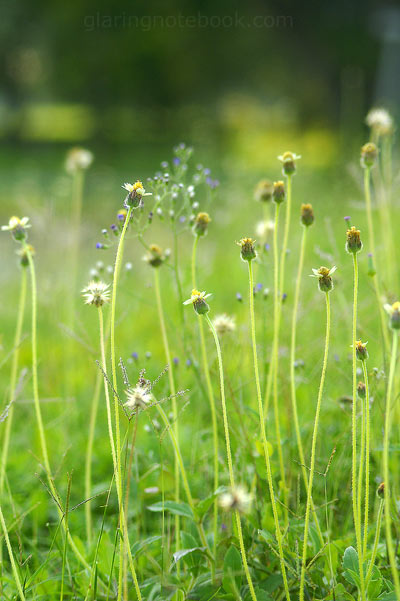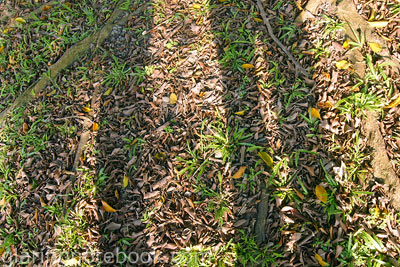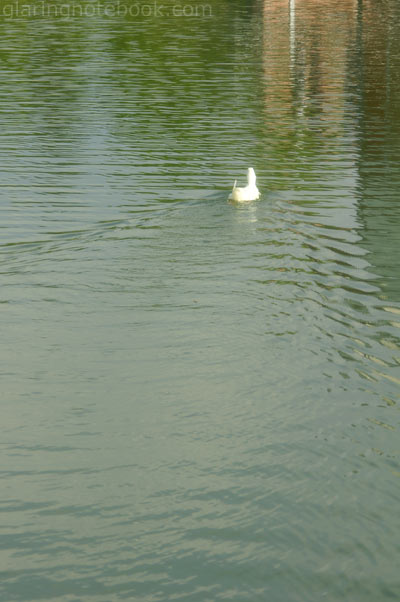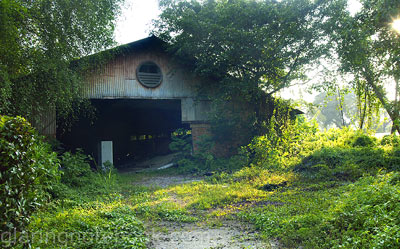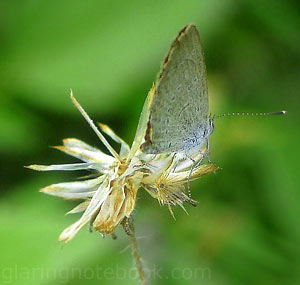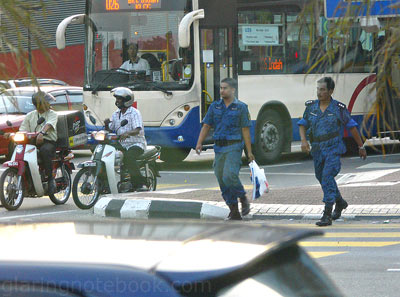I got a phone call from Ted one day.
Ted: Hey man, wanna Frankenstein my lens?
Me: Huh? Why? Which one?
Ted: My Minolta 200mm F2.8G HS APO.
Me: What? Why?
Ted: Oh, uh, I discovered that it doesn’t go well with carbonated drinks.

The Minolta 200mm F2.8G HS APO next to the Sony 100mm F2.8 Macro. I affectionately call the 200mm the White Torchlight due to its light weight and size. Plus the built-in hood extends.
This is supposedly the 2nd best Minolta AF lens in terms of bokeh (beat by the Minolta 85mm F1.4G), and possibly the fastest Minolta AF lens in terms of AF speed. I can attest to this, having tried the lens before it ‘mixed’ with a drink.
Nope, it doesn’t have a motor inside, but having its gearing optimized internally for High Speed, it focuses faster than any other tele lens I’ve tried. Instant and without hesitation.

A most unique focus limiter system lets you set the minimum focus distance at any range, and the maximum focus distance using a ring and a screw. I never fully understood how to use this.

This is what happened to it after the accident – loads of internal flare and softness.

I’m not sure what effect it is on the carpet.

The acids from the drink took its toll on the aperture blades, which were badly rusted.

Condensation on the back. Not a pretty sight.

And so, I took the lens apart with the help of a service manual I found online. Note the chipped paint syndrome of white Minolta lenses.

Hoods and rings yo.

Alas, I didn’t get to remove any elements or get to the aperture blades, which I intended to remove. At the very least it would be a fixed aperture fixed length prime lens, and that would still be okay as it’s very sharp wide open.

The focus indicator and what actually controls the internal focusing element.

I bought a compass to attempt to unscrew the ring that holds the front element in, but to no avail. I needed a real lens opener (yes, that’s what they call it!)
I gave up and sent it to Ah Miao of International Camera in Pertama Complex. Jeff of Leos Trading Ampang Park recommended him, saying “if he cannot fix it, nobody can!” I earlier went to Cheah Repair but Albert Cheah was busy. 

Ah Miao did an amazing job, cleaning the glass, assembling its focus ring and the screws which I removed and couldn’t put back. He also removed the aperture blades as requested.

It was back in action, and sharp as ever! However was a blemish inside that couldn’t be saved. It was slightly soft when out of focus, which made it slightly slower when focusing, but still pretty darn fast.
It would be better suited for full-frame – on APS-C it was just a bit too long. 

Images had a certain 3D pop about them.

Tracking is super fast, such that it could jump focus to something else if I’m not careful where I’m aiming!

Though, at times, I wish I could stop down to retain some context of what I’m shooting.

All the more so with macro.

1.5 meters is the minimum focusing distance.

But hey, I can manage – this isn’t the only fixed-aperture lens I have… 

The Minolta 200mm F2.8G HS APO with Kenko 2x teleconverter next to my Tamron 200-400mm F5.6. I’d say the Minolta + TC, being 400mm F5.6, was still sharper than the Tamron.

Minolta 200mm F2.8G HS APO + Kenko 2x teleconverter.

100% crop.

Sony Alpha 700 + Kenko 2x teleconverter + Sony HVL-F56AM next to the Minolta Dynax 7 + Tamron 1.4x teleconverter + Seagull Minolta hotshoe adapter + Nikon SB-28.

Left to right: Minolta 70-210mm F4 beercan, Minolta 200mm F2.8G HS APO, Sony 70-200mm F2.8G SSM, Carl Zeiss 135mm F1.8, Carl Zeiss 16-80mm F3.5-4.5 DT.

Family photo, not up to date even!
Rear, from left to right: Sigma 17-35mm F2.8-4.0 EX, Vivitar Series 1 28-105mm F2.8-3.8 (I’d call this a HS lens too), Sigma 70-210mm F4-5.6, Cosina 70-210mm F2.8-4.0 1:2.5x Macro, Minolta 70-210mm F4 beercan, Tamron 200-400mm F5.6.
Front, from left to right: Peleng 8mm F3.5 circular fisheye, Vivitar 24mm F2.0 Tilt-shift, Industar 50mm F2.8, Minolta 50mm F1.4, Minolta 200mm F2.8G HS APO.
